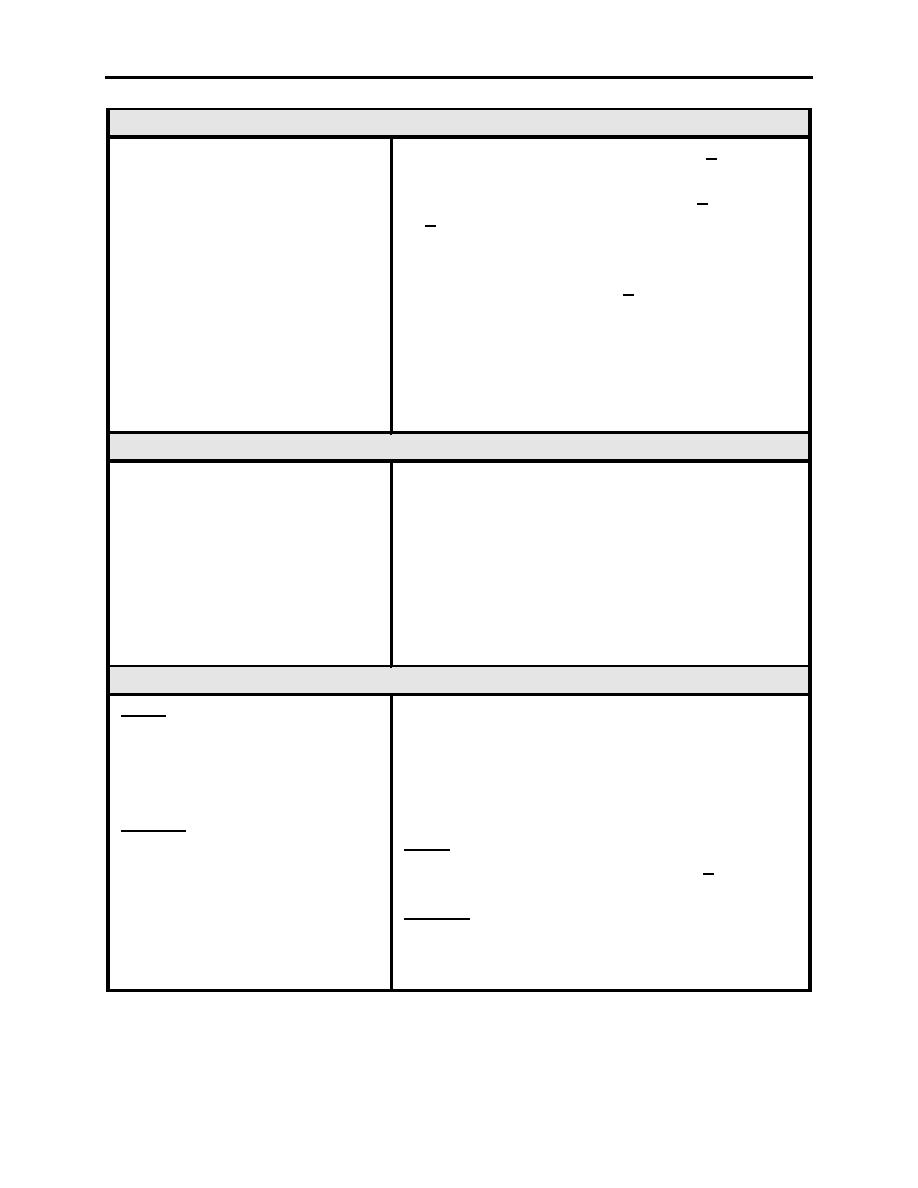 |
|||
|
|
|||
|
Page Title:
Appendix C Grading Standards Universally Graded Items - Cont'd |
|
||
| ||||||||||
|
|  INTERMEDIATE FLIGHT PREPARATION WORKBOOK
APPENDIX C
16. Enroute Navigation
● Maintain a specified enroute
● Maintains course while radial tracking +5 or 3 NM
course on appropriate radial or
(whichever is less).
● Determines wind direction and speed +30 and
airway.
+10 knots.
● Applies proper crosswind heading corrections and
compensations.
● Properly leads turns within +0.5 NM at NAVAIDs
and fixes, taking into account observed actual GS.
● Makes appropriate recommendations for enroute
flight plan changes given direction of flight, FLIP,
weather, and mission requirements.
● Changes NAVAID and CDI course at the proper
switchover point while on an IFR airway.
17. Point-to-Point Navigation
● Proceed direct to an assigned fix
● Expeditiously establishes an initial heading to the
using VOR/DME or TACAN
fix within 30 of actual course.
● Applies proper crosswind heading corrections and
Pt.-to-Pt. procedures per FTI.
compensations.
● Continuously updates Pt.-to-Pt. navigation to arrive
within 3 NM and 10 (whichever is less), avoiding
sudden, large (>30) heading changes.
● Properly leads turns at fixes taking into account
observed actual GS.
18. Fuel Management
● Correctly reads and totals fuel quantity and flow
INAV
● Update destination IAF fuel
gauges.
● Makes appropriate recommendations regarding
estimates.
● Make recommendations to an
power setting, altitude, and route in order to arrive
at destination/alternate with required fuel
alternate destination if necessary.
minimums.
LL NAV
INAV
● Accurately monitors fuel to
● Calculate IAF fuel estimates to within +100 pounds
determine mission feasibility.
of instructor calculations.
LL NAV
● Accurately compares Mission Completion Fuel
(MCF) with actual fuel and makes appropriate
recommendations regarding mission feasibility.
GRADING STANDARDS
C-5
|
|
Privacy Statement - Press Release - Copyright Information. - Contact Us |